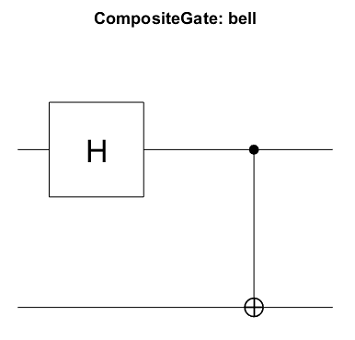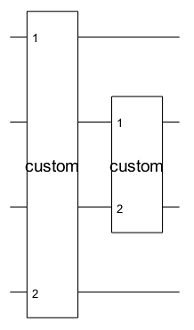compositeGate
Installation Required: This functionality requires MATLAB Support Package for Quantum Computing.
Syntax
Description
cg = compositeGate(circuit,targetQubits)quantum.gate.CompositeGate object. The specified target qubits map each qubit of
the inner circuit to a qubit of the outer circuit containing the composite gate.
The length of the targetQubits vector must be equal to the number of
qubits in circuit. The Name property of
circuit is copied to the Name property of
cg.
cg = compositeGate(gates,targetQubits)
The length of the targetQubits vector must be greater than or equal
to the largest qubit index in gates.
Examples
Input Arguments
Version History
Introduced in R2023a


